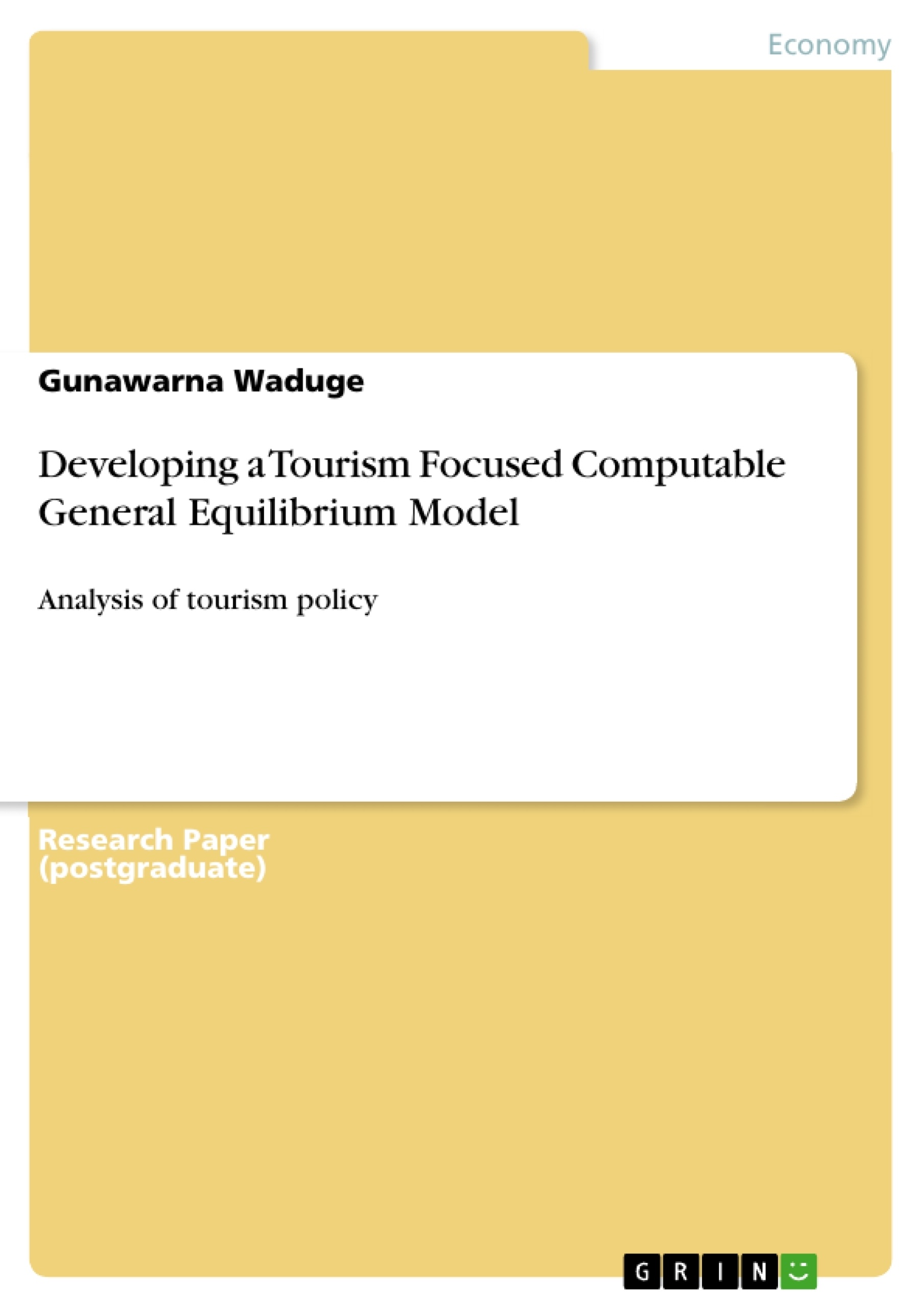Conventional literature has proven that Computable General Equilibrium (CGE) modelling is the best applied tool addressing and analysing tourism related issues in an economy. Therefore, the aim of this paper is to develop a Computable General Equilibrium Model for an economy (hereafter referred to as CGE-Tourism) for tourism impact analysis. The core model of CGE–Tourism closely follows the well-known Australian ORANI model and the extension of tourism to the core model closely follows the recent work of Australian tourism modellers. This paper contains six sections. The second section provides a brief summary of economic impact analysis of tourism. Section three outlines the overview of the theoretical structure and implementation of the CGE-Tourism model. The system of equations of the core model of CGE-Tourism is presented in section four. Section five describes the new extension of tourism modelling to the core model.
Measuring the contribution of tourism to a national economy has always been a frustrating exercise. Tourism does not have specific products. It represents the sum of expenditure by travellers for wide range of products. It is not possible to identify tourism as a single "industry" in the national accounts, its value to the economy is not readily revealed. As a result of the absence of tourism in official economic statistics, there is often an on-going battle to establish tourism credibility as an economic activity and generator of income in the economy. As a result, a significant volume of tourism research over the past few decades have focussed on the development and use of a variety of economic techniques aimed at quantifying the effects of tourism on an economy. In conventional literature has proven that Computable General Equilibrium (CGE) modelling is the best applied tool addressing and analysing tourism related issues in an economy. The paper provided a complete description of the theoretical structure of the CGE-Tourism including all equations and variables by using relevant Excerpts for different blocks of equations in the TABLO file associated with the GEMPACK software used to operationalise the model. The incorporation of tourism using the dummy sector approach into an ORANI type CGE model as an extension and can be considered as the main contribution of this study to the CGE modelling literature for An economy. This is a clear departure from the traditional methods used for tourism modelling in an economy.
Inhaltsverzeichnis (Table of Contents)
- Introduction
- Economic Impact Analysis of Tourism
- An Overview of the Model
- The Theoretical Structure of the Model
Zielsetzung und Themenschwerpunkte (Objectives and Key Themes)
The main objective of this paper is to develop a Computable General Equilibrium (CGE) model for an economy, specifically focusing on tourism impact analysis. This CGE-Tourism model aims to address the limitations of traditional methods used for tourism modelling in an economy by incorporating tourism using a dummy sector approach into an ORANI type CGE model.
- Measuring the economic impact of tourism
- Developing a CGE model for tourism impact analysis
- Incorporating tourism into an ORANI type CGE model
- Quantifying the effects of tourism on an economy
- Simulating the economic impact of tourism booms
Zusammenfassung der Kapitel (Chapter Summaries)
The paper begins by highlighting the challenges associated with measuring the contribution of tourism to a national economy. It emphasizes the lack of a single, identifiable tourism sector in official economic statistics, leading to difficulties in quantifying its economic impact. The paper then delves into the theoretical structure of the proposed CGE-Tourism model, drawing inspiration from the well-known Australian ORANI model. It outlines the model's system of equations and its extension to incorporate tourism modelling.
Schlüsselwörter (Keywords)
The key terms and concepts explored in this paper include Computable General Equilibrium (CGE) modelling, tourism impact analysis, dummy sector approach, ORANI model, tourism multiplier effects, economic statistics, and tourism credibility.
- Citar trabajo
- Gunawarna Waduge (Autor), 2017, Developing a Tourism Focused Computable General Equilibrium Model, Múnich, GRIN Verlag, https://www.grin.com/document/370387



